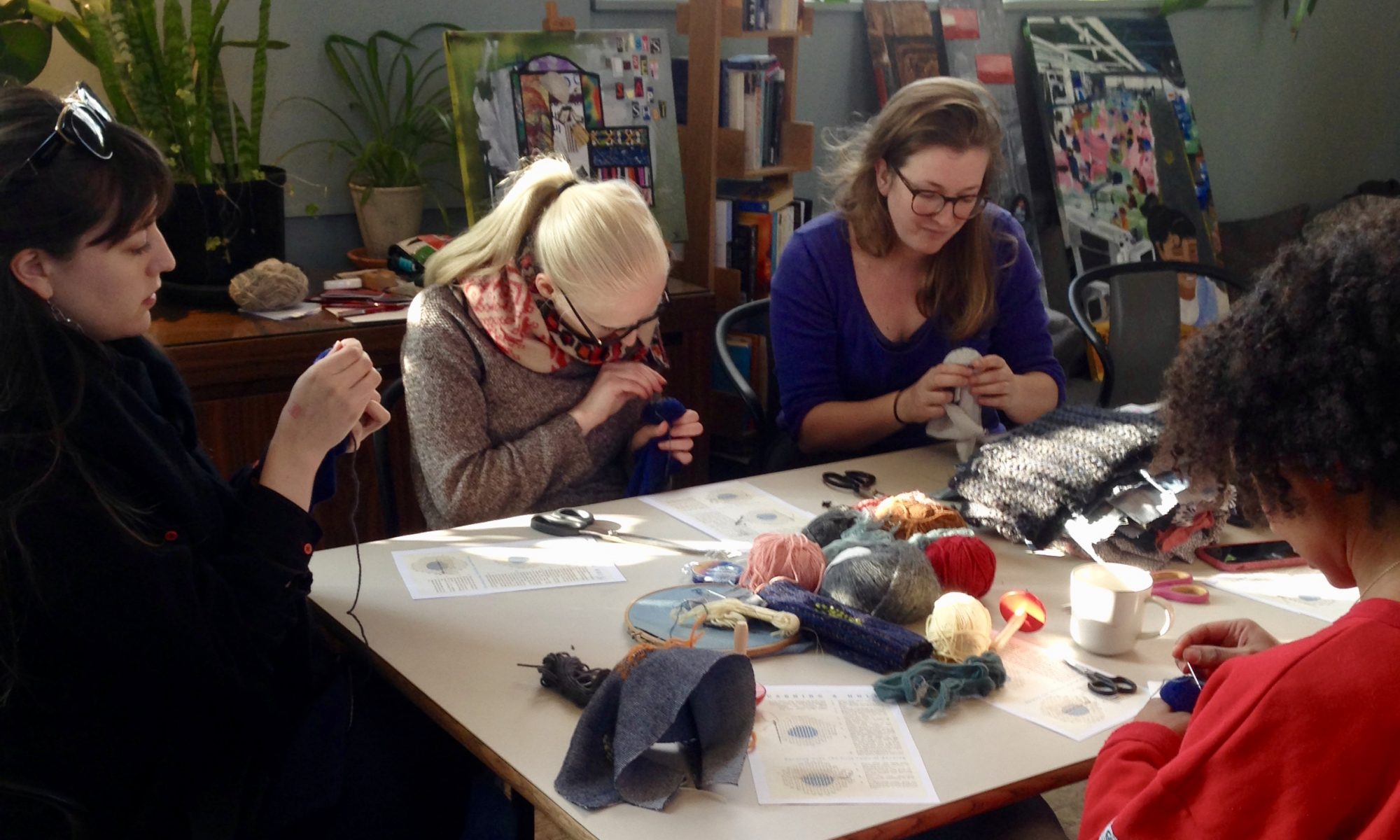Money | Fashion | Power
This year, Fashion Revolution is calling on global citizens to rise up together for a regenerative, restorative and revolutionary new fashion system. Throughout Fashion Revolution Week, the groundwork will be laid down for new laws on living wages for the people that make our clothes, brands will be encouraged to shift their focus away from endless growth, and consumers will be inspired to scrutinise the real value of what we buy.
Fashion Revolution Week
How to avoid overconsumption
As a consumer, we have the power to change the fashion system. Shopping can be overwhelming, trying to figure out which brands pay living wages, who are trying to greenwash us, which ones are championing organic and recycled material?
There is a simple answer to this and that is to buy less, value what we have and the new clothes we buy. Fashion Revolution are asking brands to ‘shift their focus away from endless growth’. We can support this cause buy reducing the growth of our wardrobes. Below we share our tips on how to make a difference all year round.
Mend more, buy less
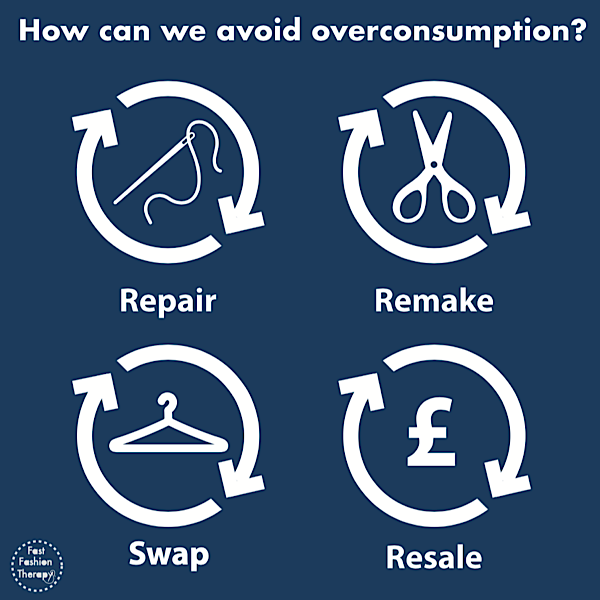
We teach people to repair, refresh and refashion their clothes. Mending clothes means we get to wear the garment for that bit longer. It could be a favourite pair of jeans that has holes from being worn so much. Or a dress that never did fit quite right and needs altering. Maybe even a coat that hasn’t been worn simply because the button fell off. The process of mending is rewarding, taking time over a piece of clothing, feeling the cloth and remembering the times we wore it. As we repair, we understand the construction of the clothes and all the hard work that goes into making them. Helping us to value them more.
Slow down and think about what we are buying. It is not the end of the world if we buy something new if it has been a very thought out decision and we have thought of other options beforehand.
Jen Gale, Sustainable(ish)
Buy second hand
We love fashion, it is in our name! Keeping and wearing our clothes for longer hasn’t stopped us enjoying the shopping experience. Expressing our identity through the clothes we wear, buying second hand is more fun than buying new. The UK’s highstreets are full of charity shops selling clothes in every shape, colour and size. Discovering areas of towns and cities that have the best selection. Buying from charity shops is a double win as we are preventing the clothes from reaching landfill and the charity benefits from the sale. Swishing (clothes swapping) events, buying vintage and using the many second hand clothes apps are also a fun way to shop. Jen Gale started Sustainable (ish) to encourage us all to make ethical choices and not feel bad when we are not able to. This was a result of a year of not buying anything new in 2014, which Jen has pledged to repeat this year. Find out how she gets on, plus lots of other great tips on her podcast.
Greenwashing

A word of warning here. A fashion brand may talk the talk and at first glimpse sound like they are sustainable but there is more to investigate. For example, H&M have their Conscious range. This is a tiny percentage of their overall sales, the rest of which do not follow the same sustainable credentials. The fast fashion system started around the industrial revolution in the 19th Century, increasing over the decades, especially after World War II. This has resulted in a complex supply chain, where often the fashion buyers and product developers don’t know the full journey of their stock from fibre to shop floor. How can they ensure staff are paid a living wage and treated fairly and harmful chemicals are not released if they don’t know where the fibre is produced or where the fabric is woven?
Who made my clothes?
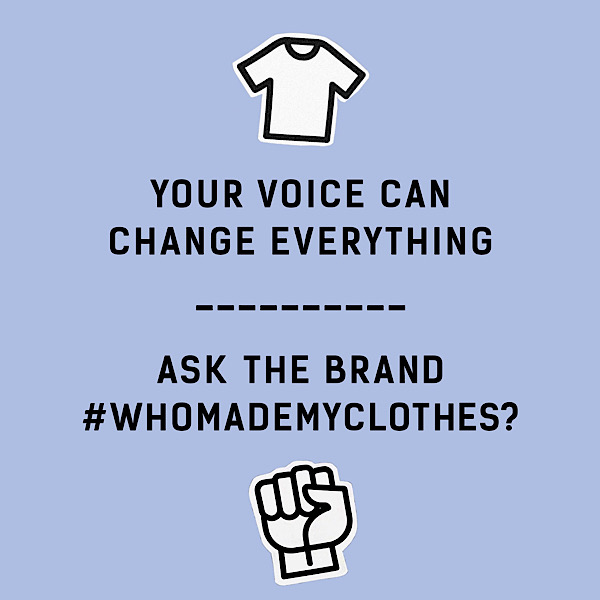
We need to ask our favourite brands this simple question. If we keep asking them then they need to ask their supplier. Usually brands don’t own their own factories. They commission factories, often through an agent, to make the garments for them. The agents or factories can then give some of the work to another factory without the brand knowing. So they can’t always answer this question. We can go deeper and ask who made my fabric? They might know the factory that constructed the garment, but do they know where the fibres were created, who dyed the yarn, wove or knitted the fabric, printed the fabric? ‘Who made my fabric?’ is another important question to ask.
Clothes waste

Online clothing sales grew by £2.7 billion in the U.K. during the pandemic, with physical stores closed total sales still fell by £9.6 billion. This shift in behaviour when buying clothes is expected to continue as more than a third of people say they would carry on with these new buying habits. It is now expected that online clothing sales in the U.K. will overtake in-store purchases this year, previously this was expected to happen in 2025.
It is common for people to order many items online, try them on and then return what they don’t like as many people expect these clothes to be put back into stock for someone else to buy them. This isn’t always true, it is cheaper to throw the clothes away than to repackage and resell them. Luxury and fast fashion brands have also been reported to burn brand new clothes that haven’t been sold to avoid their distinctive designs being sold cheap elsewhere. A report released in 2017 found that 73% of clothing that is thrown away by consumers goes to waste, with 57% ending up in landfill and 25% of this being incinerated.
However, there has been some signs of positive change recently. Since 2020, France has been bringing in new Anti-Waste laws to encourage a shift to the circular economy, one of these means that is now illegal for new unsold clothing and textile items to be burnt or sent to landfill. This law has already changed the way luxury goods companies manage their stock and production. This action is proof of the power that governments have to change the fashion industry and shows the importance of campaigning to pressure governments in other countries to act as well.
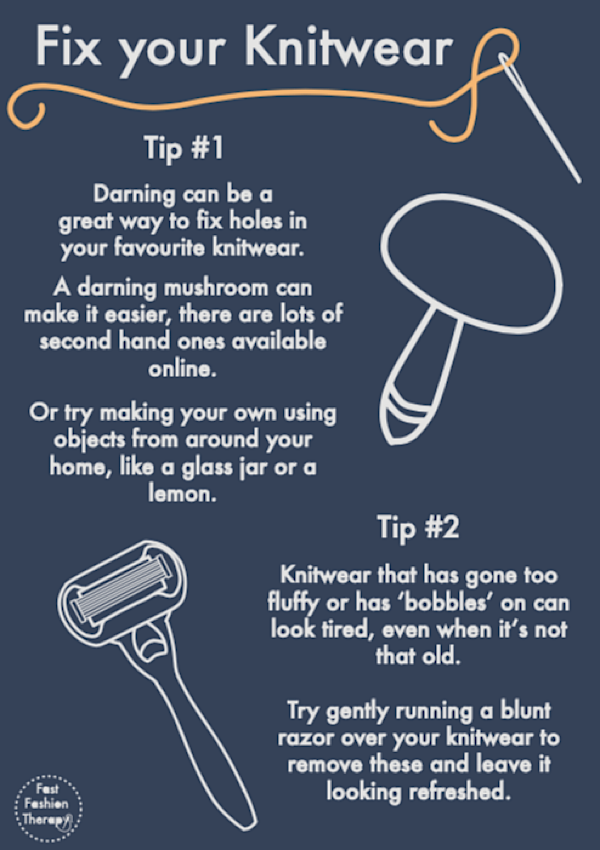
Fashion is fun and an important way for us to express our identity. It provides a living for millions of people across the globe. But buying clothes should not at the detriment to the people who make them or the Earth’s resources. Considering all of these aspects when buying new clothes is overwhelming. But it really is as simple as buy less, value what you buy by wearing the garment more. When it needs a bit of TLC, we can help you out.
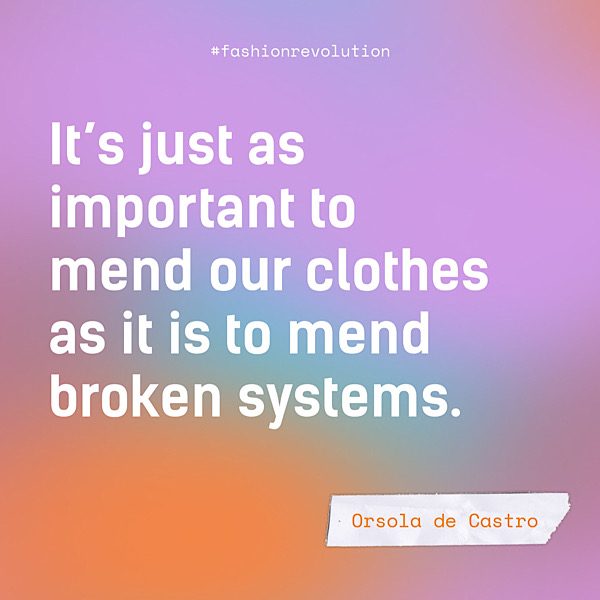
About Fashion Revolution Week: This is the ninth year in which the charity ask us to challenge our favourite fashion brands with the question #whomademyclothes? Fashion Revolution was established in 2013 a year after the Rana Plaza disaster that killed 1138 garment workers in Bangladesh. Since then charity have been campaigning globally against the human and environmental consequences of the fashion industry. Encouraging brands to change their practices to a more transparent and circular model.
